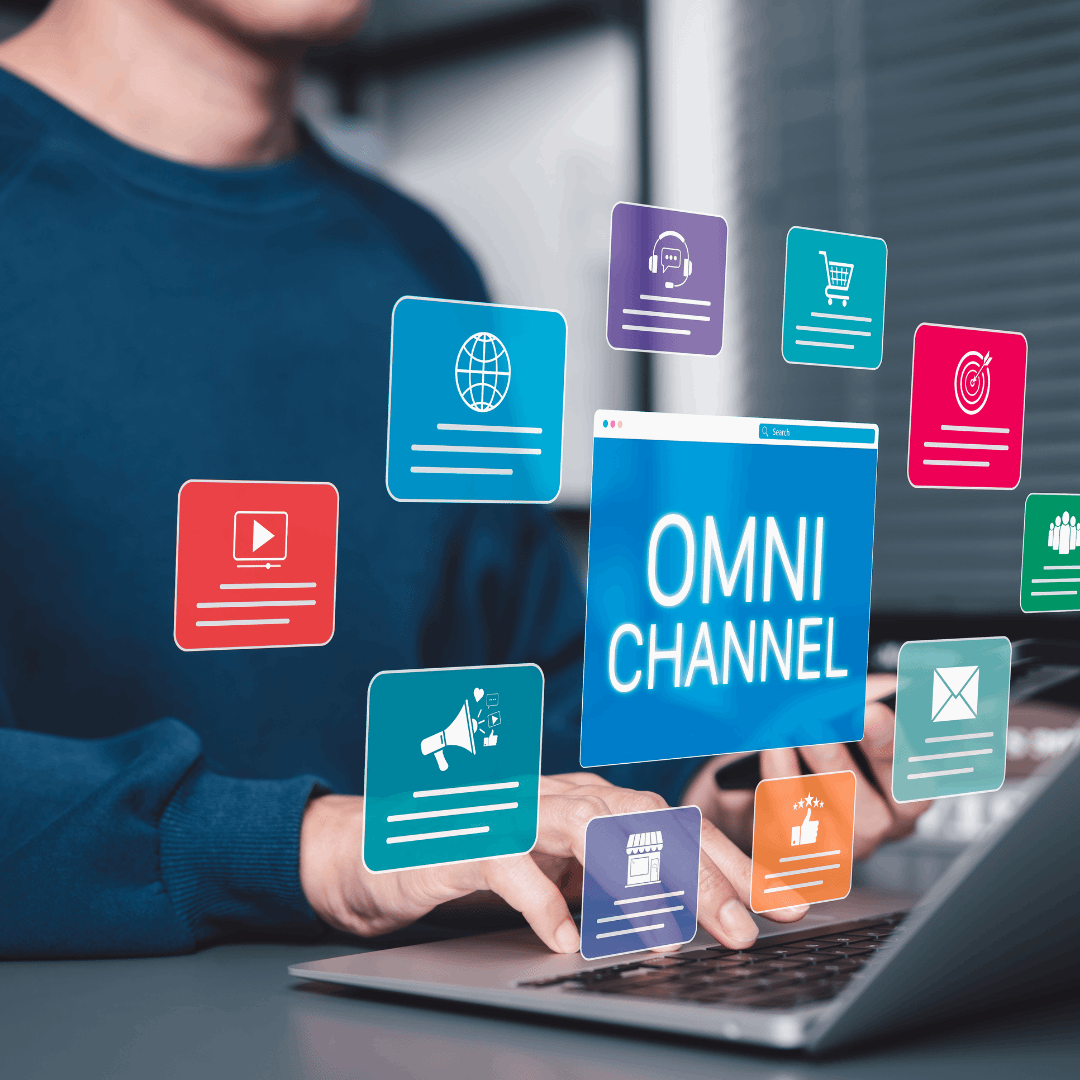Digital transformation has reshaped almost every aspect of our lives, and businesses are no exception. We are now in an age where digitization is no longer just an option but a business necessity. This transition is accelerating, demanding that businesses adapt to survive.
One thing that emerged with digital transformation is e-commerce, which enabled businesses to operate in a direct-to-consumer (DTC) model.
This article explores a comprehensive omnichannel retail strategy, outlining why DTC brands should embrace retail, how to enter the market profitably, and the importance of partnering with CPG brokers to fully maximize their profitability.
Why DTC Brands Should Consider Retail
Direct-to-consumer (DTC) involves directly reaching consumers to sell products, usually through e-commerce websites or catalogs. It has become the go-to strategy for many CPG brands, which have seen significant gains from incorporating it into their business models.
DTC has provided cost savings from doing away with middlemen, and it has also evened out the playing field to allow new brands to penetrate the market more easily than with traditional strategies alone.
But should one totally ditch retail and focus solely on DTC? Of course not. Keep in mind that an effective omnichannel strategy isn’t just about being in multiple places; it’s about creating a seamless brand experience that meets customers wherever they are.
Rather than thinking of DTC and retail as separate entities, it helps to think of them as tools that can go hand-in-hand in ensuring the success of your CPG brand.
Retail Entry Can Help Solve Challenges of Being a DTC-Only Brand
For many thriving DTC companies, a move into brick-and-mortar is a strategic response to the growing challenges of a digital-only existence. An omnichannel strategy that incorporates retail can solve several key problems, such as the following:
- Financial Pressures: As a DTC-only brand, you may find that customer acquisition costs are climbing while the return on ad spend is declining. Entering retail can alleviate this pressure by providing a new channel to drive customer awareness and acquisition.
- Stalling Growth: Once organic DTC growth stalls, brands may eventually experience a plateau and find themselves scaling ads more than their brand. A retail presence provides the immense visibility and sales velocity needed to break through this ceiling and fuel the next stage of sustainable growth.
- Investor Expectations: The investment community increasingly wants to see a brand prove its success and scalability in the retail channel. Executing a disciplined and well-funded retail expansion provides the tangible proof of scalability that investors need to see, often unlocking further funding opportunities.
Retail Amplifies DTC (It Doesn’t Replace It!)
An omnichannel strategy allows both channels to work in synergy, creating a powerful growth loop.
- Drives Discovery: Physical stores give brands a new channel for organic customer awareness and acquisition. It’s common for customers to discover a product in-store before becoming a repeat purchaser online, and vice versa.
- Fuels Scale: Partnering with major retailers provides the visibility and velocity needed to achieve sustainable, long-term growth.
- Cross-Channel Behavior is the Norm: Today’s consumers seamlessly bounce between digital and physical touchpoints on their path to purchase, which underscores the need to have both an online and brick-and-mortar presence.
Strategies for a Profitable Retail Entry
A successful leap into retail requires a disciplined and methodical approach. While there’s no hard rule on how to go about it since every CPG brand has its unique needs, we can still follow a set of strategies that can serve as a guide in your brand’s launch to retail.
Here are 5 key strategies to guide your brand’s launch in retail:
1. Ensure Your COGS (Cost of Goods Sold) are Optimized
Your product margin is the foundation of retail profitability. The target for your product margin should be at least 45%, with 55% being ideal for a healthy business. A 55% gross margin can potentially yield a 5% to 15% net margin after all fees and deductions have been accounted for.
2. Select the Optimal Starting Retail Channel
Your channel strategy is critical. We recommend starting with the natural channel before going to the conventional one, because slotting fees can be wildly higher in conventional retail. With this approach, it’s usually easier to move from natural to conventional while protecting your brand’s cachet.
A great way to illustrate the effectiveness of this strategy is to look at the success of Olipop. In 2018, it started in just local health food stores and national grocery chains in Northern California, gradually expanding to larger stores like Walmart and Target.
To summarize the strategy that Olipop implemented; they went from one regional focus, expanding to super regional channels, then the national natural channels and core conventional channels, and then eventually reaching mass distribution. Their success was undeniable: they grew from 40 to 40,000 stores in just 5 years!
3. Optimize Your Packaging and Pricing Specifically for that Retail Channel
Packaging is core to your success on the shelf and must follow the “3 Second Rule” that describes how a standout packaging should be able to catch the attention of the consumer. It meets the following key questions:
- “Can I See It?”
- “Do I Know What It Is?”
- “Why Should I Buy It?”
It’s often necessary to create different packaging or smaller SKUs for retail to avoid channel conflict and offer a lower, more accessible price point for risk-averse shelf shoppers.
4. Test the Hypothesis
Before a large-scale rollout, test your strategy in a controlled environment. You can test your packaging and pricing at farmer markets, local retailers, and through in-store demos. A regional launch of 50 to 75 stores is a safe way to ensure your product works in retail before expanding further.
5. Adjust Your Strategy Based On Testing
To effectively manage your omnichannel retail strategy, you must move from assumption to accountability. Success depends on tracking the right metrics and understanding what the retail data is telling you about your product’s performance at the shelf.
Here are some of the ideal data sources that you can use to track performance and measure the effectiveness of your marketing spend:
- Retailer Portal Data: Retailer portals provide an accessible, low-cost way to learn how your products are selling within a specific retail environment, and can also provide insights into competitors within that specific chain.
- Distributor Data: Distributor data can provide real-time insights regarding your supply chain. It can help in monitoring inventory levels and in ensuring that the product is flowing correctly from the warehouse to the retailer. However, this can be less precise, as it tracks movement to the retailer and not necessarily to the end consumer.
- Third-Party Data Providers: Services like SPINS and Nielsen provide highly accurate and granular data across categories and retailers, but they can be expensive and complex, which can be a significant barrier for smaller CPG brands.
- Consumer Feedback and Market Research: This involves directly gathering qualitative retail data from your customers. They can be from a wide range of sources, including surveys, product reviews, and in-store demonstrations.
Moreover, consider using RORAS (Return on Retail Ad Spend) as a key metric to monitor and evaluate the efficiency of your efforts in driving retail velocity. It can provide comprehensive insights that can help you gain a precise understanding of promotional effectiveness for your CPG brand.
Key Advantages of Partnering With a Reliable CPG Broker for Maximum Retail Profitability
A reliable CPG broker or retail partner can work with you and act as your strategic guide as you move towards retail entry. They can lend you their CPG industry experience, helping you in accelerating growth and avoiding significant pitfalls.
In addition to implementing the effective strategies previously discussed, partnering with an experienced CPG broker can further optimize your efforts to achieve your desired profitability. They can bring you the following benefits:
- Insider Relationships and Negotiation Power: Partnering with an experienced whole foods broker can help you gain access to their network of retail buyers and category managers. This, in turn, can allow you to improve your product’s visibility and to negotiate the best possible terms for your brand.
- Logistical Assistance: A whole foods broker can assist you in working within the entire distribution process, including setting up with national distribution, negotiating the terms of distribution contracts, and ensuring your supply chain is set up for success from day one.
- Strategic Promotional Planning: A natural food broker can help design and manage a full promotional calendar, aligning your brand’s goals with the retailer’s schedule. They have expertise in structuring effective promotional campaigns to drive trial and velocity without simply giving away margin.
- Administrative Lift and Deduction Management: Brokers can take away the administrative burden related to retail entry, including new item setup, promotional submissions, and compliance. They can also assist in managing and distributing the inevitable chargebacks and deductions from distributors and retailers that can erode margins if left unchecked.
- Risk Mitigation and Problem Solving: A proactive natural food broker can help you avoid costly mistakes that may require expert help to get fixed, such as incorrect pricing at the shelf and out-of-stock issues.
Drive Sustainable CPG Growth and Profitability With VDriven
Implementing effective omnichannel strategies is the key to unlocking the next phase of growth for CPG brands, especially those that have started their distribution solely via DTC. But moving a digital-first brand towards one that effectively utilizes an omnichannel strategy may require careful planning, strategic execution and deep industry knowledge.
If you’re ready to expand your DTC success into the retail aisle, you don’t have to do it alone. At VDriven, our team has the expertise and network to guide you through every step of the retail entry process, from optimizing your margins to securing the right retail partners.
Contact VDriven today to discuss your omnichannel strategy for retail entry and build your roadmap for profitable CPG growth.






